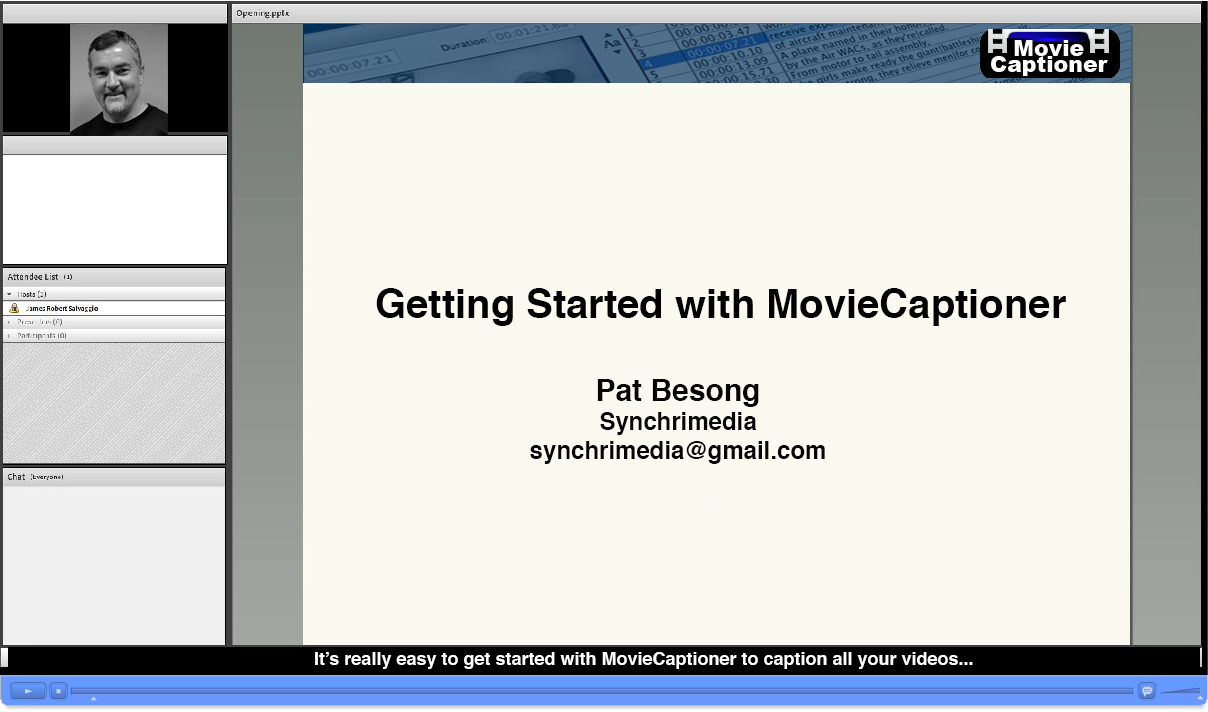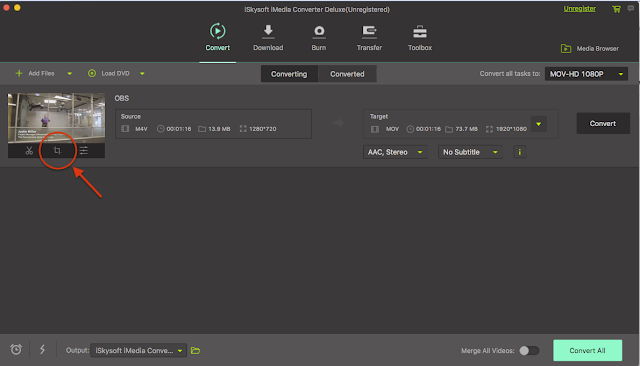Captioning Recorded Adobe Connect Meetings
If you need to caption Adobe Connect meetings that have already been recorded, there is an easy way. First, download these template files. The files contain an instructional PDF with screenshots showing you how to download your recorded meeting, how to caption it using MovieCaptioner, and how to make the captions work. The process is simply this:
- Download your Adobe Connect recording and name it "main.flv" (case sensitive).
- Load the movie into MovieCaptioner and create the captions.
- Export the captions as Flash (DFXP) caption file naming it "captions.xml" (the default name from MovieCaptioner for Flash captions).
- Copy the template folder and name it what you want.
- Drop the "main.flv" and "captions.xml" files in the folder, replacing the 2 files with the same name in the template folder.
- Launch the "index.html" file in the folder to check your work.
- Upload the whole folder to your Web space and link to the "index.html" file

The big thing is to keep the naming convention of "main.flv" for the movie and "captions.xml" for the caption file as that is how it's hard-coded in the Flash file that plays the movie. The original Flash FLA file is also included in case you know Flash and want to change any aspects of the player.
Also note that this method does not use the files that are on the Adobe Connect server to deliver the video. You upload your template folder to your Web space and link to the "index.html" file inside this folder. The file sizes are not too bad to download for the user. For example, a 50 minute meeting recording is only 180MB in size for a 1920x1072 video that scales in size as you scale your browser window.
It is recommended that you use the Mac version of MovieCaptioner to do the captioning as it will eliminate the need to create a .MOV movie file from the .FLV file that you download from the Adobe Connect server. This is because there is a free plugin for QuickTime on the Mac called Perian http://www.perian.org that allows you to play FLV movies in the QuickTime Player. This plugin is not made for Windows. Perian will discontinue developing/supporting this plugin at some point as it says on their Web site, but you can still download it.
You can certainly use the Windows version, but you will need to convert the FLV to either a .MOV or MPEG-4 movie that can play in QuickTime prior to loading into MovieCaptioner for Windows. Sorry that I cannot recommend a particular video conversion app for this on Windows. Please beware of downloading software that may contain viruses or trojans on Windows. You would only need the MOV file for use with MovieCaptioner. You will still use the FLV file in the template folder.
If you've never tried MovieCaptioner, give it a whirl. You can download the demo which is fully functional for 14 days. There are also tutorial videos to get you up to speed with it in minutes here: MovieCaptioner Tutorial Videos.
Good luck with your captioning projects!


Patrick, do you have an example of a closed captioned AC webinar that you have created? When I have done this in the past, the final video (FLV) was rather small in the player and if I tried making it full screen it was sufficiently distorted to make it almost impossible to read the PPT content or the actual caption content.
ReplyDeleteWe have opted to have each of our webinars transcribed with CART and this content remains with the archived file on the AC server. The advantage is that the archived content can be resized to your hearts content and it does not become distorted. The downside is that CART is only every about 95% accurate and one is not able to edit this in the archive.
John, here are some samples that I set up for Penn State. http://www.psu.edu/dept/tlt/connect_recordings/link_script.html
ReplyDeleteIf you view the source on that page you can also get the javascript used to open the page to a specific size in the browser. The captions will scale if you change the size of the browser window, too. Downside to this method is that it may not work on iOS devices since Connect is Flash-based.